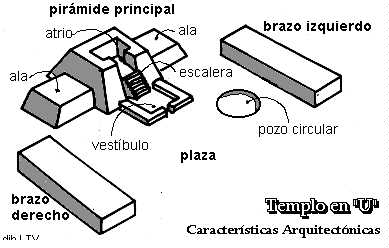Early Ceramic Culture 4000 BCE to 1800 BCE
Valdivia Culture 3300 BCE to 1500 BCE
Pre-Ceramic Culture 3000 BCE to 1800 BCE
Kotosh Culture 2200 BCE to 900 BCE
Initial Period 1800 BCE to 800 BCE
Important Events:
3300 BCE Villages begin to coalesce along the coast of the Santa Elena Peninsula in southwestern Ecuador. The centers share cultural features that are known as Valdivian. Small stone figures and ceramic vessels are used by the people.
2800 BCE Early settlements at Cerro Narrío in the Ecuadorian highlands have contacts with the Pacific coast to acquire spondylus shell and with the tropical Andes for coca leaves.
2700- 2500 BCE Monuments on the central coast are arranged in a U-shape, including a large temple mound in the center and long linear mounds on either side of the temple mound. The opening to the U-shaped plaza faces the headwaters of the valley. Northern coast constructions however include large rectangular terraced mounds, sunken plazas and sunken circular court.
2400 BCE On Peru's Pacific coast, gourds are still used instead of ceramics. In the North coastal regions, cotton textiles are made with images of profile-headed raptors, double-headed birds, snakes, and crabs with claws transforming into snakes.
2200 BCE Kotosh, located in the north central region of the Peruvian Andes is built between tropical lowlands and the Pacific coast, giving the people access to an abundance of resources.
The earliest ceramics appear in coastal sites that were established during the Pre-Ceramic and continued to be used through the Initial Period, such as El Paraiso. Later Initial Period constructions are located inland roughly 10 miles from the coast. Agricultural improvements such as irrigation canals allowed coastal peoples to depend less on fish and slowly move farther from the coast into valleys that could now be farmed more effectively. Construction techniques also changed dramatically during the Initial Period. Monuments were no longer constructed by small stones carried in shicra or fiber bags. During this period, adobe mud brick construction commonly decorated with plaster and colorful clay friezes starts to appear.
2100 BCE The Peruvian highland site of La Galgada has buildings of stone, plastered white. Important burials with well-preserved contents have been found in its chambers.
Works of Art:

Double-Headed Figure, end of 3rd millennium BCE
Ecuador; Valdivia
Ceramic
3 1/2 inches
Female Figure, end of 3rd millennium BCE
Ecuador; Valdivia
Ceramic
4 5/8 inches
Late Initial Period
Ceramic
Frieze at Garagay
Anthropomorphic imagery
